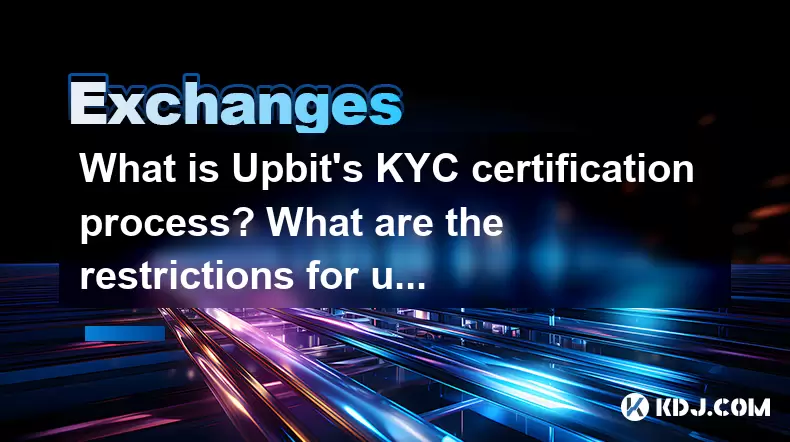-
 Bitcoin
Bitcoin $117500
2.15% -
 Ethereum
Ethereum $3911
6.19% -
 XRP
XRP $3.316
10.79% -
 Tether USDt
Tether USDt $1.000
0.01% -
 BNB
BNB $787.2
2.24% -
 Solana
Solana $175.2
4.15% -
 USDC
USDC $0.9999
0.00% -
 Dogecoin
Dogecoin $0.2225
8.40% -
 TRON
TRON $0.3383
0.28% -
 Cardano
Cardano $0.7868
6.02% -
 Stellar
Stellar $0.4382
9.34% -
 Hyperliquid
Hyperliquid $40.92
7.56% -
 Sui
Sui $3.764
7.63% -
 Chainlink
Chainlink $18.48
10.66% -
 Bitcoin Cash
Bitcoin Cash $582.1
1.88% -
 Hedera
Hedera $0.2601
6.30% -
 Avalanche
Avalanche $23.33
4.94% -
 Ethena USDe
Ethena USDe $1.001
0.02% -
 Litecoin
Litecoin $122.3
2.04% -
 UNUS SED LEO
UNUS SED LEO $8.969
-0.27% -
 Toncoin
Toncoin $3.339
0.86% -
 Shiba Inu
Shiba Inu $0.00001287
4.30% -
 Uniswap
Uniswap $10.43
7.38% -
 Polkadot
Polkadot $3.861
5.08% -
 Dai
Dai $1.000
0.02% -
 Bitget Token
Bitget Token $4.513
3.41% -
 Monero
Monero $267.7
-6.18% -
 Cronos
Cronos $0.1499
4.14% -
 Pepe
Pepe $0.00001110
5.15% -
 Aave
Aave $284.9
8.28%
What is Upbit's KYC certification process? What are the restrictions for uncertified users?
Upbit's KYC process involves registration, submitting personal info, ID verification, a selfie with ID, and address proof to ensure security and compliance.
May 14, 2025 at 03:56 pm

Upbit, one of the leading cryptocurrency exchanges in South Korea, places a strong emphasis on security and compliance. A key component of this is the Know Your Customer (KYC) certification process. This process is designed to verify the identity of users and ensure that the platform adheres to legal and regulatory standards. In this article, we will delve into the specifics of Upbit's KYC certification process and explore the restrictions that apply to users who have not completed this certification.
Understanding Upbit's KYC Certification Process
The KYC certification process on Upbit is straightforward but thorough, aimed at ensuring the security and integrity of the platform. Here is a detailed breakdown of the steps involved:
Registration: The first step is to register an account on Upbit. Users need to provide a valid email address and create a password. Once the account is created, users will receive a confirmation email to verify their email address.
Basic Information Submission: After registration, users must submit basic personal information. This includes their full name, date of birth, and nationality. This information is crucial for the initial verification process.
Identity Verification: The next step involves verifying the user's identity. Users are required to upload a clear photo of their government-issued ID, such as a passport, driver's license, or national ID card. The ID must be valid and not expired.
Selfie with ID: To further confirm the user's identity, Upbit requires a selfie with the ID. The user must hold the ID next to their face, ensuring that both the face and the ID are clearly visible in the photo. This step helps prevent identity theft and fraud.
Address Verification: Users may also need to provide proof of address. This can be done by uploading a utility bill, bank statement, or any official document that shows the user's name and address. The document must be recent, typically within the last three months.
Review and Approval: Once all the required documents are submitted, Upbit's compliance team reviews the information. This process can take anywhere from a few hours to a few days, depending on the volume of applications. Users will receive an email notification once their KYC certification is approved.
Restrictions for Uncertified Users on Upbit
Users who have not completed the KYC certification process on Upbit face several restrictions. These measures are in place to protect both the platform and its users from potential risks associated with unverified accounts. Here are the key restrictions:
Deposit and Withdrawal Limits: Uncertified users are subject to lower limits on deposits and withdrawals. This means they can only move a limited amount of cryptocurrency in and out of their Upbit account. The exact limits may vary, but they are significantly lower than those for certified users.
Trading Restrictions: Uncertified users may also face restrictions on trading activities. They might be limited to trading only certain cryptocurrencies or have lower trading volumes. This is to mitigate the risk of fraudulent activities on the platform.
Access to Advanced Features: Many advanced features on Upbit, such as margin trading, futures trading, and certain types of orders, are only available to certified users. Uncertified users are unable to access these features, which can limit their trading strategies and opportunities.
Account Verification Delays: If an uncertified user attempts to perform certain actions that require verification, such as withdrawing a large amount of cryptocurrency, they may experience delays. The platform may require them to complete the KYC process before proceeding with the transaction.
Importance of KYC Certification on Upbit
The KYC certification process is not just a regulatory requirement; it also plays a crucial role in enhancing the security and trustworthiness of the Upbit platform. Here are some reasons why KYC certification is important:
Preventing Fraud and Money Laundering: By verifying the identity of users, Upbit can better detect and prevent fraudulent activities and money laundering. This helps maintain the integrity of the platform and protects other users from potential scams.
Compliance with Regulations: Upbit operates in a highly regulated environment, especially in South Korea. Completing the KYC process ensures that the platform complies with local and international regulations, which is essential for its continued operation.
Enhanced User Security: KYC certification adds an extra layer of security for users. By confirming the identity of account holders, Upbit can better protect users' assets and personal information from unauthorized access.
Building Trust: A robust KYC process helps build trust among users. When users know that the platform takes security and compliance seriously, they are more likely to feel confident in using the platform for their cryptocurrency transactions.
How to Complete the KYC Certification Process on Upbit
For users who have not yet completed the KYC certification process, here is a step-by-step guide on how to do so:
Log into Your Upbit Account: Start by logging into your Upbit account using your email address and password.
Navigate to the KYC Section: Once logged in, navigate to the KYC section of the platform. This is usually found under the account settings or security settings.
Submit Basic Information: Fill out the form with your basic personal information, including your full name, date of birth, and nationality.
Upload Identity Documents: Upload a clear photo of your government-issued ID. Ensure that the ID is valid and not expired.
Take a Selfie with ID: Take a selfie with your ID next to your face. Make sure both your face and the ID are clearly visible in the photo.
Provide Proof of Address: If required, upload a recent utility bill, bank statement, or other official document that shows your name and address.
Submit and Wait for Approval: After submitting all the required documents, wait for the Upbit compliance team to review your application. You will receive an email notification once your KYC certification is approved.
Common Issues and Solutions During KYC Certification
While the KYC certification process on Upbit is generally straightforward, users may encounter some common issues. Here are some potential problems and their solutions:
Blurry or Unclear Documents: If your uploaded documents are blurry or unclear, the Upbit compliance team may reject your application. To avoid this, ensure that your documents are well-lit and in focus before uploading them.
Expired ID: Using an expired ID will result in rejection. Always check the expiration date of your ID before uploading it. If your ID is expired, renew it before attempting the KYC process.
Incomplete Information: Make sure to fill out all required fields accurately. Missing or incorrect information can lead to delays or rejection of your application.
Technical Issues: If you encounter technical issues while uploading documents or submitting your application, try using a different browser or device. You can also contact Upbit's customer support for assistance.
Frequently Asked Questions
Q: Can I use a different name on my Upbit account than the one on my ID?
A: No, the name on your Upbit account must match the name on your government-issued ID. Any discrepancies can lead to rejection of your KYC application.
Q: How long does it take to get KYC certified on Upbit?
A: The KYC certification process can take anywhere from a few hours to a few days, depending on the volume of applications and the completeness of the submitted information.
Q: What should I do if my KYC application is rejected?
A: If your KYC application is rejected, review the rejection reason provided by Upbit. Common reasons include blurry documents, expired IDs, or incomplete information. Address the issue and resubmit your application.
Q: Can I start trading on Upbit before completing the KYC process?
A: Yes, you can start trading on Upbit with certain limitations before completing the KYC process. However, to access full trading capabilities and higher limits, you must complete the KYC certification.
Disclaimer:info@kdj.com
The information provided is not trading advice. kdj.com does not assume any responsibility for any investments made based on the information provided in this article. Cryptocurrencies are highly volatile and it is highly recommended that you invest with caution after thorough research!
If you believe that the content used on this website infringes your copyright, please contact us immediately (info@kdj.com) and we will delete it promptly.
- Tron's Sell-Off Spurs Altcoin Shift: What's Next for TRX?
- 2025-08-08 08:30:12
- RUVI Presale: Is the Growth Potential Real?
- 2025-08-08 09:10:12
- Sleep Token's US Takeover: Thornhill Rides the 'Even In Arcadia' Wave
- 2025-08-08 08:30:12
- FTT Token's Wild Ride: Creditor Repayments vs. Market Drop - A New Yorker's Take
- 2025-08-08 07:10:12
- Floki Crypto Price Prediction: Riding the Robinhood Rocket or Just a Meme?
- 2025-08-08 07:15:12
- EigenLayer, Restaking, and Ethereum: Navigating the Hype and the Hazards
- 2025-08-08 06:30:12
Related knowledge

How to use margin trading on Poloniex
Aug 08,2025 at 09:50am
Understanding Margin Trading on Poloniex

How to use advanced trading on Gemini
Aug 08,2025 at 04:07am
Understanding Advanced Trading on GeminiAdvanced trading on Gemini refers to a suite of tools and order types designed for experienced traders who wan...

How to deposit USD on Bitstamp
Aug 07,2025 at 05:18pm
Understanding Bitstamp and USD DepositsBitstamp is one of the longest-standing cryptocurrency exchanges in the industry, offering users the ability to...

How to use the Kraken Pro interface
Aug 08,2025 at 09:57am
Understanding the Kraken Pro Interface LayoutThe Kraken Pro interface is designed for both novice and experienced traders seeking a streamlined experi...

How to find my transaction ID on Gemini
Aug 08,2025 at 12:50am
Understanding the Transaction ID in Cryptocurrency ExchangesA transaction ID (TXID) is a unique alphanumeric string that identifies a specific transfe...

How to calculate crypto taxes from Binance
Aug 08,2025 at 07:56am
Understanding Cryptocurrency Taxation on BinanceCalculating crypto taxes from Binance requires a clear understanding of how tax authorities classify d...

How to use margin trading on Poloniex
Aug 08,2025 at 09:50am
Understanding Margin Trading on Poloniex

How to use advanced trading on Gemini
Aug 08,2025 at 04:07am
Understanding Advanced Trading on GeminiAdvanced trading on Gemini refers to a suite of tools and order types designed for experienced traders who wan...

How to deposit USD on Bitstamp
Aug 07,2025 at 05:18pm
Understanding Bitstamp and USD DepositsBitstamp is one of the longest-standing cryptocurrency exchanges in the industry, offering users the ability to...

How to use the Kraken Pro interface
Aug 08,2025 at 09:57am
Understanding the Kraken Pro Interface LayoutThe Kraken Pro interface is designed for both novice and experienced traders seeking a streamlined experi...

How to find my transaction ID on Gemini
Aug 08,2025 at 12:50am
Understanding the Transaction ID in Cryptocurrency ExchangesA transaction ID (TXID) is a unique alphanumeric string that identifies a specific transfe...

How to calculate crypto taxes from Binance
Aug 08,2025 at 07:56am
Understanding Cryptocurrency Taxation on BinanceCalculating crypto taxes from Binance requires a clear understanding of how tax authorities classify d...
See all articles

























































































